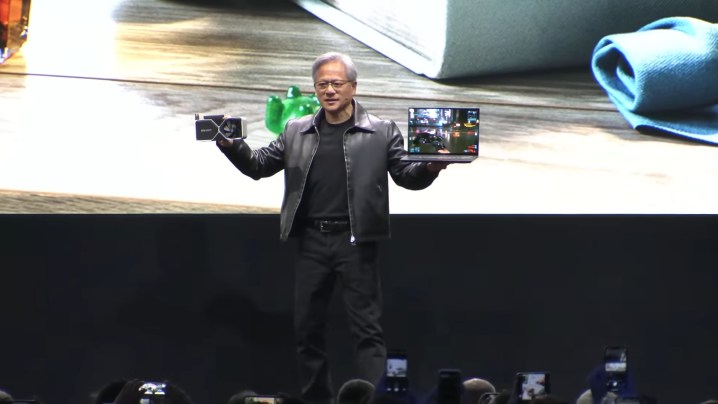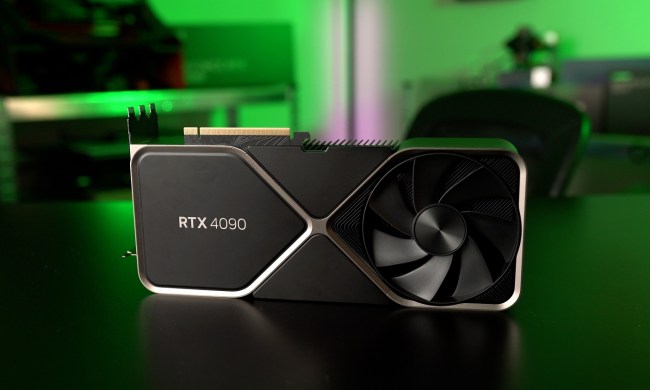
Nvidia is now one of only six companies worth more than $1 trillion. It joins the list among Apple, Microsoft, Saudi Aramco, Alphabet, and Amazon, marking a significant milestone as Nvidia rides a wave of generative AI brought on by ChatGPT.
The company’s stock soared following its Computex 2023 keynote, where Nvidia announced a new AI super computer called DGX GH200, along with Nvidia ACE, which is a tool that enables generative AI in game development. By contrast, the company’s recently-launched RTX 4060 Ti GPU was merely a footnote in the two-hour presentation focused almost exclusively on AI.
With the mark passed, Nvidia is now worth almost as much as Amazon, which itself has a market cap of $1.25 trillion. It’s possible Nvidia will fall below that mark — both Meta and Tesla have slipped from the trillion-dollar club — but it doesn’t look like that’s happening any time soon.
None of this, or at least a very insignificant part of it, has to do with Nvidia gaming graphics cards. It’s mostly on the back of AI, which has seen Nvidia catapult to the forefront of this emerging tech. As we learned a few months ago, it was thousands of Nvidia GPUs that drove the AI model behind ChatGPT.
That leaves gamers in a strange spot. It’s no secret that Nvidia has a massive lead in gaming graphics cards. The most recent Steam hardware survey says that 76% of gamers use an Nvidia GPU. Despite that, gamers have been voicing a lot of issues with Nvidia’s new pricing structure for gaming GPUs, with graphics cards like the RTX 4080 arriving $500 more expensive than the previous generation.
Unfortunately, there’s not a lot of incentive for Nvidia to lower GPU prices, even with reports of “zero” interest in cards like the RTX 4060 Ti. Nvidia’s most recent earnings call showed a 28% decline in gaming revenue over the past year, while data center, where Nvidia focuses its AI advancements, saw a 14% increase. Perhaps most telling is that these two segments saw around the same amount of revenue a year ago. Today, the data center business is nearly twice as large as gaming.

With that business booming, it’s hard to expect Nvidia to lower prices when it already has an overwhelming lead in gaming and it’s seeing less money from that segment. The RTX 4090 is a prime example of that. It uses the AD102 GPU, which is the same GPU inside the Nvidia L40 and RTX 6000, both of which are data center GPUs. The RTX 6000 is around $2,000, while the L40 sells for $8,000 or more. Nvidia probably wants to use its chip where it can make the most money.
There’s more to that story — lower-end GPUs use different dies and Nvidia has set allocation for gaming GPUs — but it’s easy to see why Nvidia isn’t really interested in bringing down GPU prices. With the exception of the RTX 4060, which launches in July, every GPU from Nvidia’s most recent generation has been more expensive than its last-gen counterpart.
Nvidia forecast this trend last year, when the company’s CEO claimed falling GPU prices were a “story of the past.” For its part, AMD has been capitalizing on the price increases, with its RX 7900 XTX and RX 7900 XT undercutting Nvidia, but still arriving more expensive than the previous generation.
For gamers on a budget, the best hope for more reasonable graphics card prices is competition. AMD’s recently-released RX 7600 is actually cheaper than the previous generation while offering a decent performance improvement, and Intel’s Arc A750 and A770 have continued to look like solid options as Intel has brought their price down.
There’s still a lot of competition missing, though. Intel hasn’t announced its next-gen GPUs, and AMD only has options at the high-end and low-end. Regardless, the Nvidia we see today is much different than the one gamers knew a decade or more ago, and the company’s Computex 2023 keynote made that clear.




